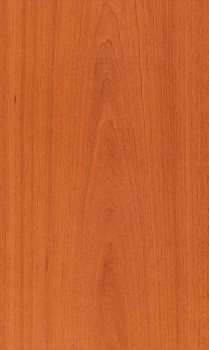Cherry (Prunus, serotina)
Trade Names: Cherry, American Cherry, Black Cherry
Origin: North America
Range: Northeastern halves of Canada and USA as well as south to Florida and Texas. Cultivated to some extent in Europe. However, only the trees from the growing areas in Northeastern USA and possibly Canada are significant for veneer production. Northern Pennsylvania is the best known growing region.
Uses: Veneers are widely used for architectural panels and furniture. Good qualities are always in demand. However, due to this heavy demand it is becoming more and more difficult to find American Black Cherry in good qualities. Much pressure has been put on this specie from the 1980's until the present day. Veneers as well as lumber are highly sought after in all phases of the wood industry.
Properties: The color of the heartwood is orange-reddish to reddish-brown with a satiny finish. Unlike the European Cherry the wood darkens considerably. This is why the European Cherry is considerably more select and purer in color than the American Black Cherry. Numbering amongst the natural features of Cherry are gum pockets in the annual rings (a frequently occurring feature) as well as pin knots (tight-grown, small knots).
Machining: As a general rule machining operations present no difficulties. Molding can also be carried out cleanly without any remachining or surface treatment being necessary.
Seasoning: The wood can be dried relatively quickly without any great difficulty.
